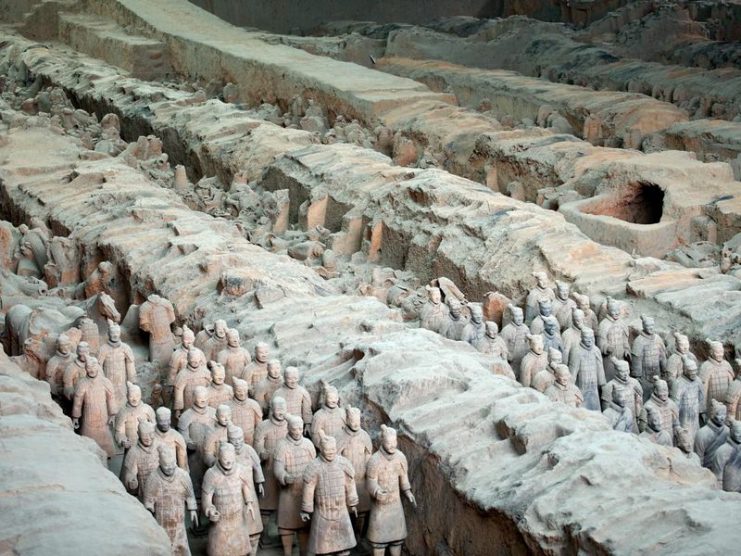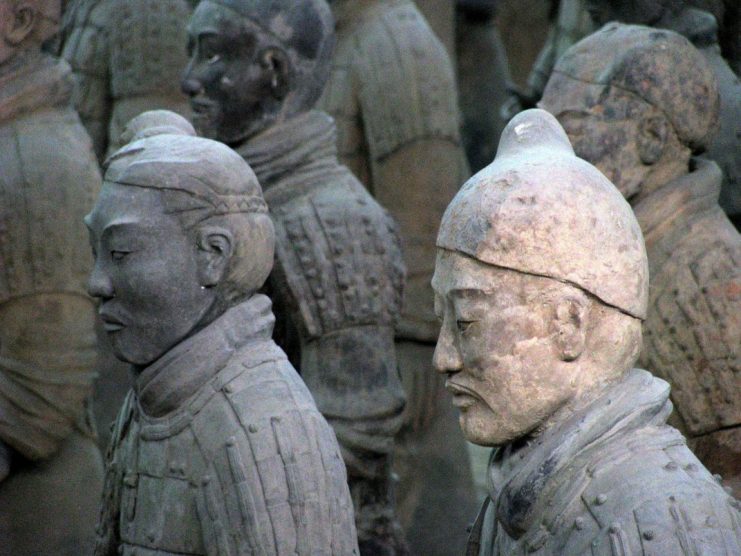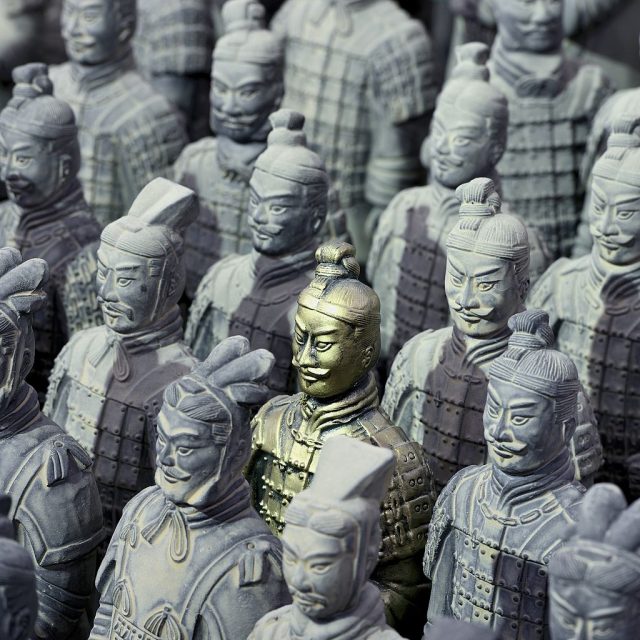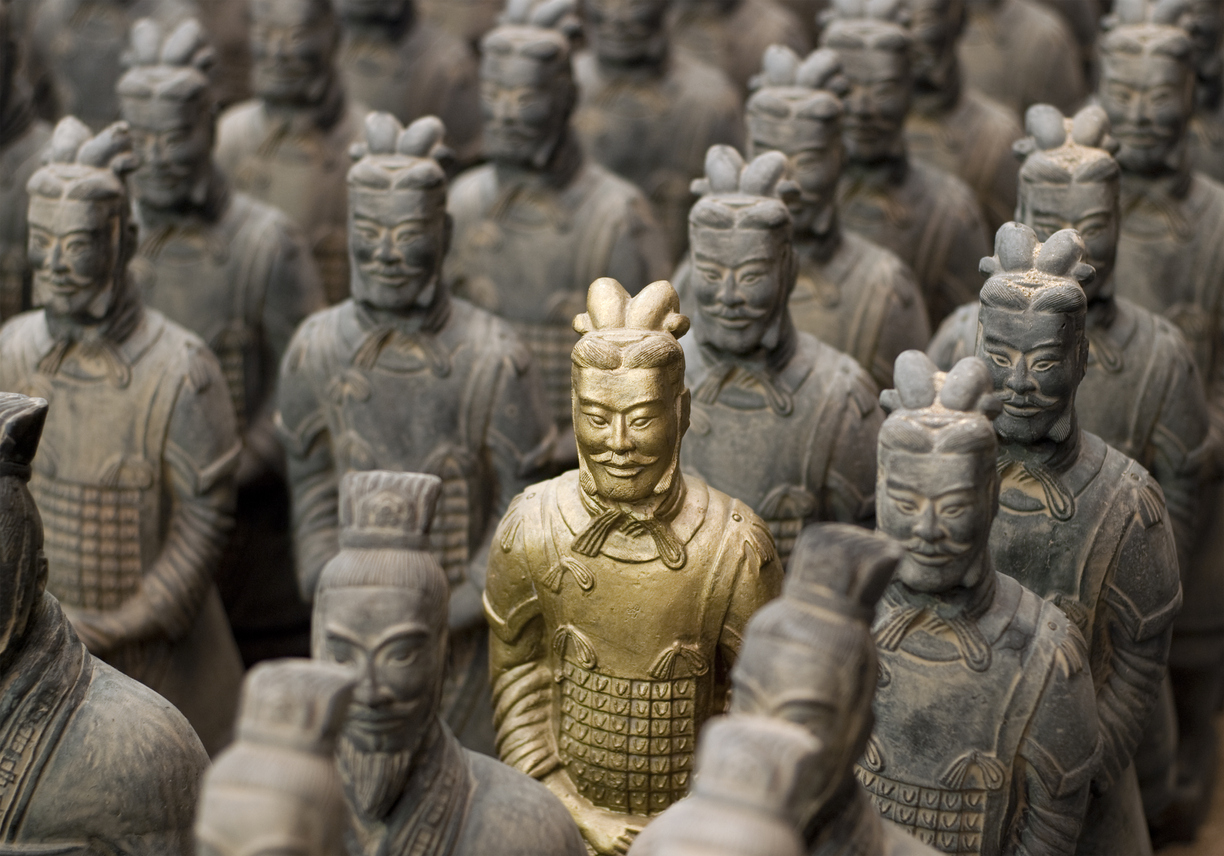Chinese farmers were digging a well in 1974 when they discovered fragments of a life-sized statue of a terracotta warrior. The area was then discovered to be 2,000-year-old, 20-square-mile burial site for Qin Shi Huang.
Excavations of the site uncovered 2,000 terracotta statues of soldiers and experts estimate that there are 7,000 in total at the site. Now, archaeologists have announced the discovery of an additional 200 statues plus a large amount of weapons.

There have been four pits discovered in the site. One of them was empty, which indicates that the project was abandoned before completion, possibly during the period of unrest following Qin Shi Huang’s death.
“No. 1 Pit” is the largest of the other three pits. A ten-year excavation of that pit led to the discovery of the additional statues.
The majority of the soldiers were carved in one of two positions. Either their right arm is bent and their hand appears to be holding some kind of pole weapon, or their right arm is straight down at their side as if they are carrying a bow.

One of the fascinating aspects of these terracotta warriors is that no two are the same. Each has their own facial features and hairstyles.
Their armor and clothing seems to indicate their military rank. The statues seemed to be organized based on their role in the military.
Some believe that the attention to detail means that each statue was modeled on real soldiers who served in the emperor’s army.
Among the other items discovered were twelve clay horses, two chariots that have been destroyed over the years, shields, bronze swords, and bows.

Qin Shi Huang rose to power at the age of 13. He reigned as the emperor of China from 221 to 210 BC. He was able to conquer the tribes around him and create the first unified Chinese empire.
During his reign weights, measures and written language were all standardized in the empire. He also began building fortifications that would become the Great Wall and built infrastructure to further unite his empire.
The young emperor was very interested in immortality and combed his empire for magicians or alchemists who could create an ‘elixir of life’ for him.
It is believed that the massive terracotta army was created to protect the emperor in the afterlife.
In the middle of the burial site is the emperor’s mausoleum. This has not been opened out of fears for how to preserve it and also because of fears of booby traps that may be inside.
https://www.youtube.com/watch?v=g4mMY47veBQ
Ancient manuscripts describe models of palaces, pavilions and offices. It is believed to be a model of the court around him during his life.
It is estimated that 700,000 people worked on the site for 30 years. Uprisings after Qin Shi Huang’s death put a stop to the work which then lay untouched for 2,000 years.
The English Longbow: Machine Gun Of The Medieval Era
The site is currently home to a museum where visitors can view the excavators work in the pits. The No. 1 pit is covered by a building the size of an airplane hangar. Several million people visit the site every year.
